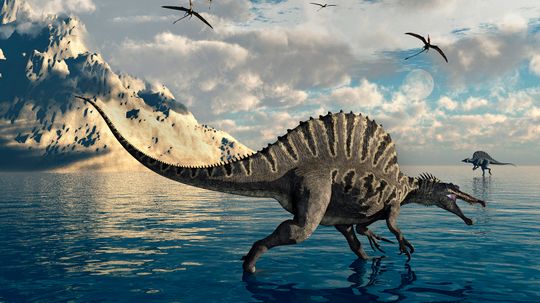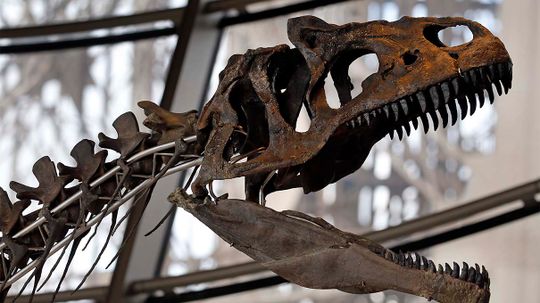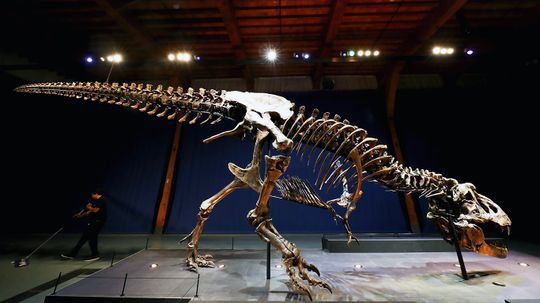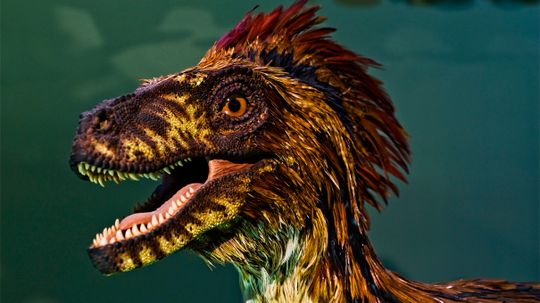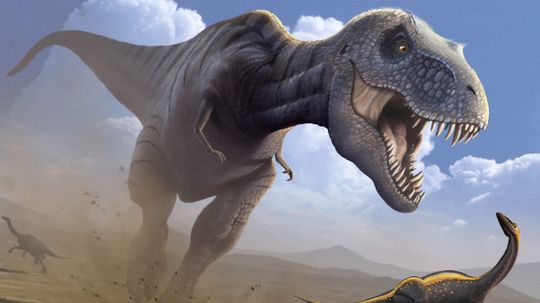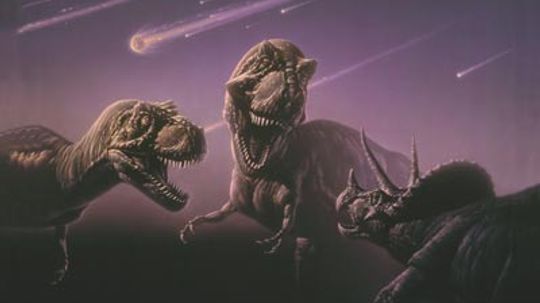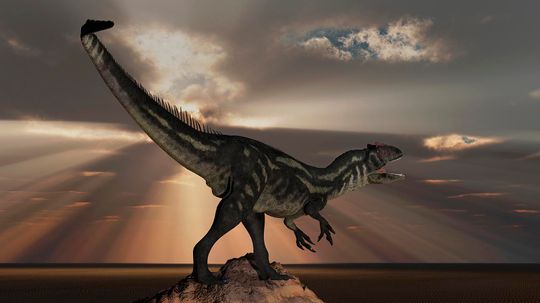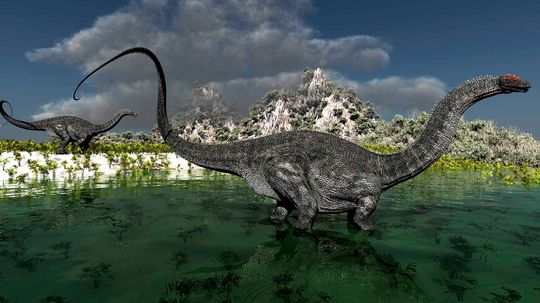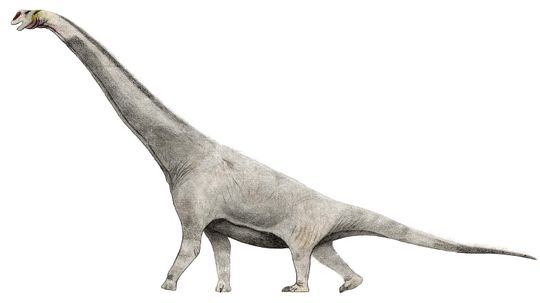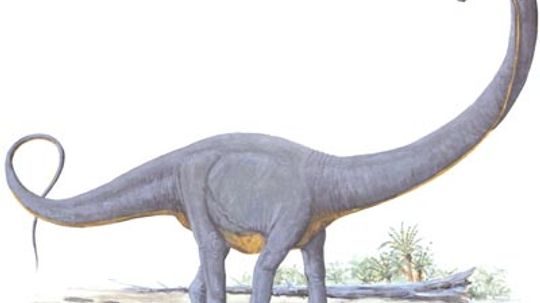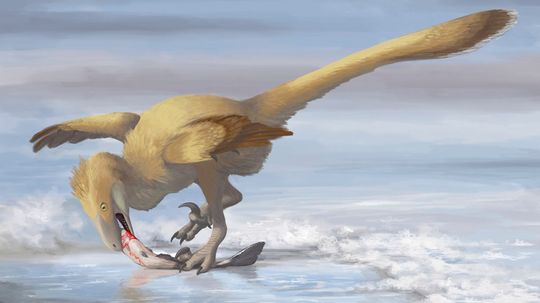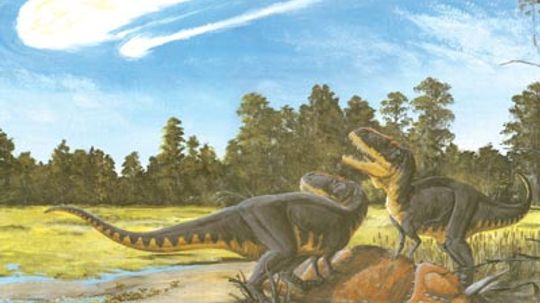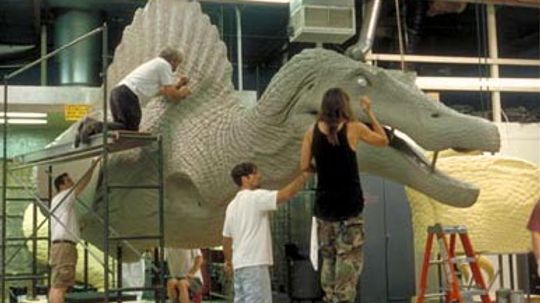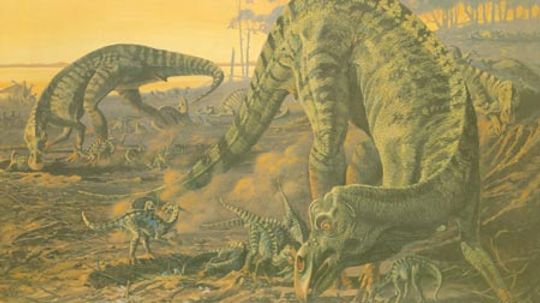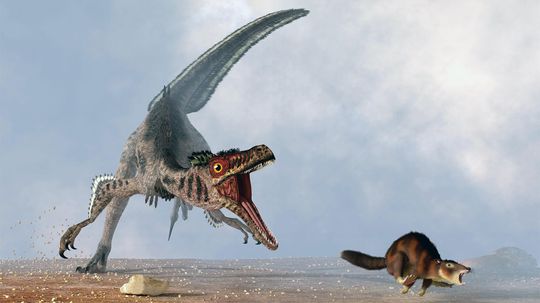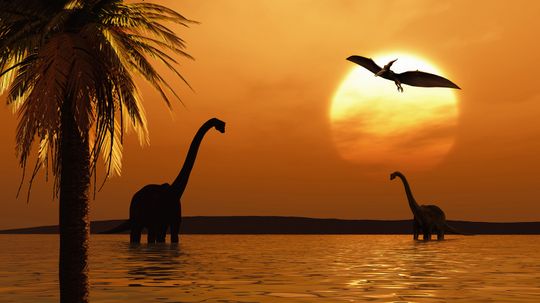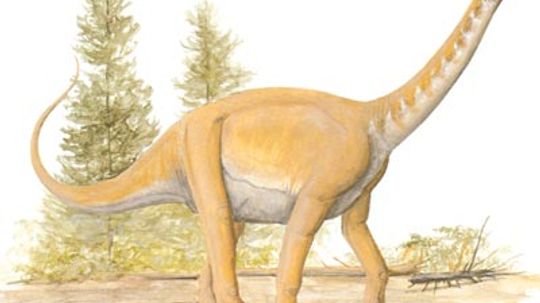Dinosaurs
It isn't hard to imagine the world full of dinosaurs, even though these extinct animals haven't walked the earth for millions of years. Learn all about dinosaurs, including early dinosaur discoveries, dinosaur fossils, and dinosaur extinction.
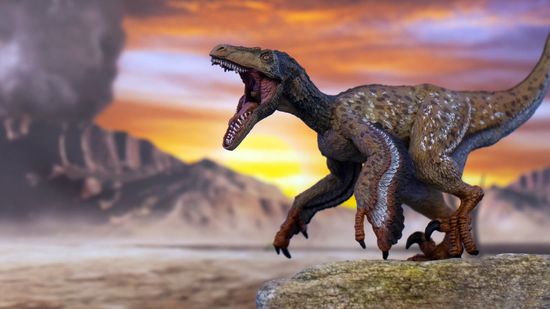
12 Scariest Dinosaurs You'd Want to Avoid While Time Traveling
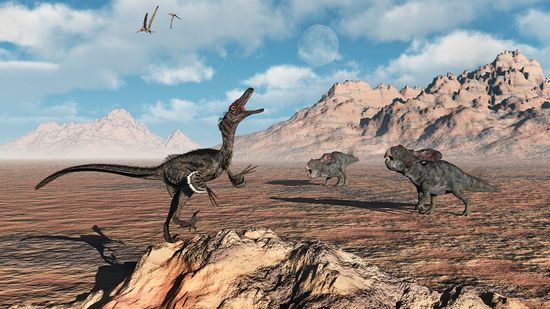
The Smartest Dinosaur (and 9 More Clever Prehistoric Reptiles)
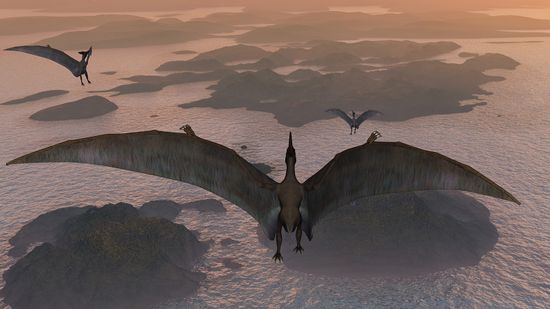
Pteranodon vs. Pterodactyl: Comparing Non-dinosaur Species
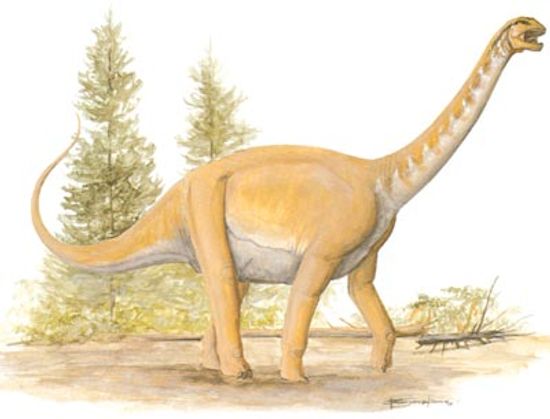
Barapasaurus
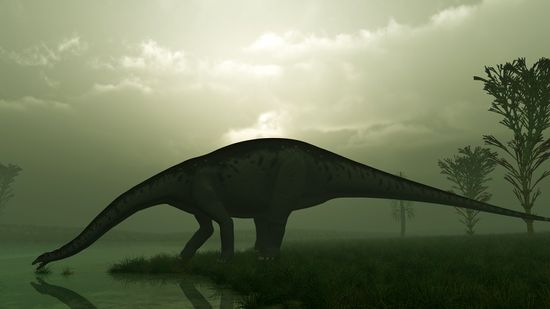
Brontosaurus vs. Brachiosaurus: Comparing Long Necks
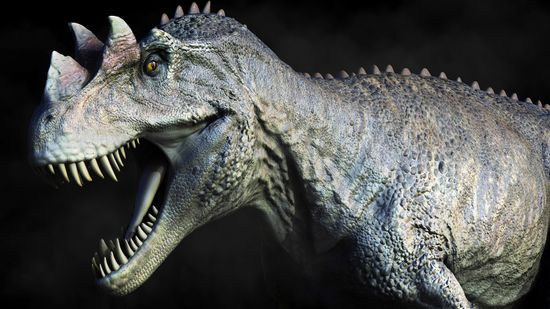
Ceratosaurus: The Horned Lizard of the Jurassic Period
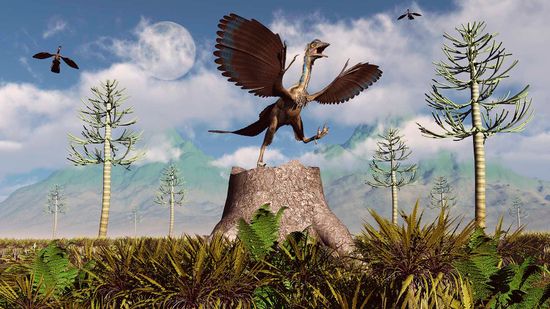
Meet Archaeopteryx, a Feathered Dino With Wings and Teeth
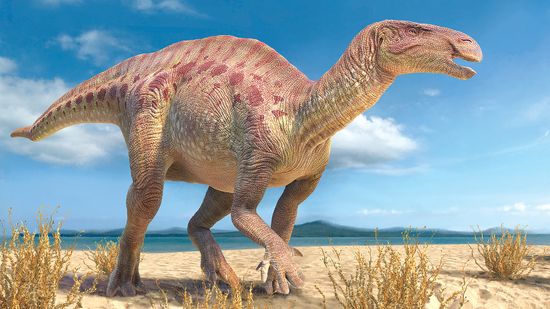
Iguanodon Skeletons Are the Most Complete of Any Dinosaur
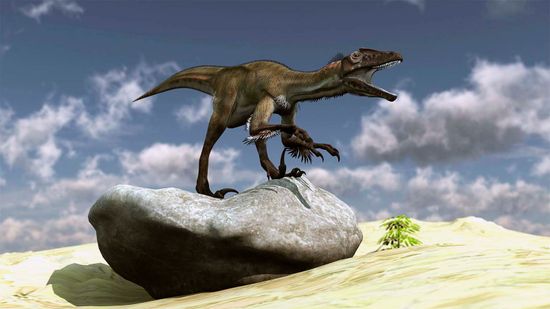
Utahraptor: The Salty Saga of a Killer Dinosaur
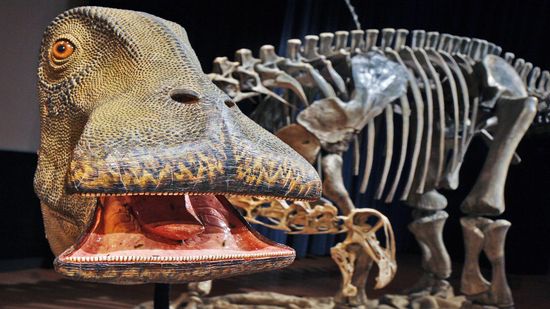
Nigersaurus: The 'Mesozoic Cow' With More Than 500 Teeth
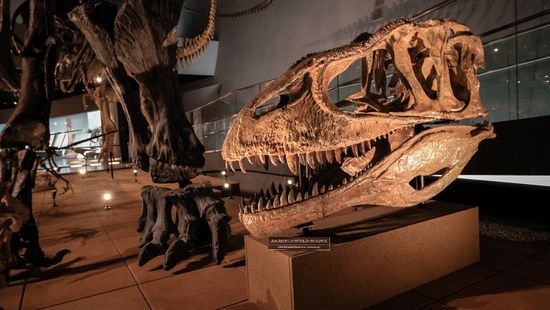
Carcharodontosaurus Rivaled T. rex as a Shark-toothed Hunter
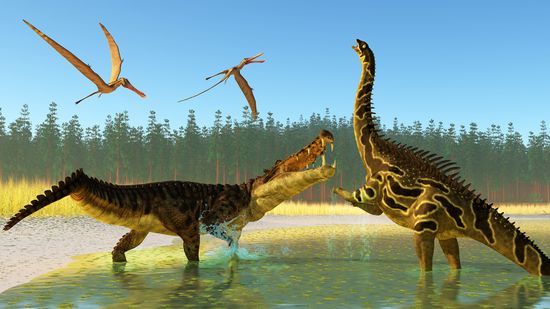
Kaprosuchus Was a Giant, Dinosaur-eating 'Boar Croc'

Quetzalcoatlus: The Largest Flying Creature in Earth's History
Learn More / Page 2
The villainous dinosaur from 'Jurassic Park' probably never had an affinity for water.
By Mark Mancini & Talon Homer
Someone just paid $2.36 million to take home an exquisite dinosaur skeleton. The sale has added to the growing scientific anxiety about the commodification of precious, irreplaceable fossils.
By Mark Mancini
Scientists are at odds about whether Velociraptors worked together to take down their prey.
By Mark Mancini
Advertisement
Tyrannosaurus rex was a giant predator that roamed the earth, so why did it have such tiny arms?
By Mark Mancini
Scientists generally agree that dinosaurs sported colorful, feather-like plumage. So do moviemakers lack imagination, or do audiences?
By Chris Opfer
OK, hop in your time machine and go back 67 million years or so to the Cretaceous period. Then find a Tyrannosaurus rex and challenge it to a race. Sounds crazy, huh? Could you really outrun a Tyrannosaurus rex?
It isn't hard to imagine this scene even though dinosaurs haven't walked the earth for millions of years. Dinosaurs have captured our imaginations. These dinosaur articles have been written to lead you into the exciting world of dinosaur research and back to the "Age of Dinosaurs."
Advertisement
A full grown Allosaurus could be up to 34 feet long, stand 9 feet tall and weigh around 3 tons. This dino was a monster who, scientists suspect, would even eat his own kind.
By Mark Mancini
Apatosaurus was a huge sauropod from the Jurassic period. And there's a debate that's been raging for decades about whether its genus should cancel out the Brontosaurus entirely.
By Mark Mancini
Brachiosaurus has been portrayed in popular culture many times, but the representations of this mysterious dinosaur are largely based on another massive dino called Giraffatitan brancai.
By Mark Mancini
Supersaurus was a dinosaur that truly deserved its name. It measured about 100 feet in length and lived in North America. This dinosaur lived on a diet that consisted mostly of chutes and leaves from the tops of trees.
Advertisement
The 1964 discovery of Deinonychus in southern Montana was groundbreaking for many reasons, mostly because it helped prove that birds are direct descendants of dinosaurs.
By Mark Mancini
Dinosaurs became extinct at the end of the Cretaceous Period. How and why is a puzzle that paleontologists are trying to solve by studying fossils and rock formations. Learn more about the different extinction theories.
Interest in dinosaurs soared to new heights in the 1990s, thanks largely to the blockbuster film Jurassic Park. So too did dinosaur discoveries. Since 1990, more than 100 new dinosaur genera have been described and named. Learn more about recent dinosaur discoveries.
Since it was named in 1979 by John Horner and Robert Makela, Maiasaura has become one of the most famous dinosaurs. It has provided information about how it cared for its young and the early development of dinosaurs. Learn more about the Maiasaura.
Advertisement
The Velociraptors in "Jurassic Park" were roughly the size of humans. In reality, they were about the size of an average turkey.
By Mark Mancini
Types of dinosaurs include the lizard-hipped dinosaurs and the bird-hipped divisions of dinosaurs. Both of these types of dinosaurs probably shared a common ancestor during the Middle Triassic. How else are these dinosaurs related?
By Mack Hayden
Barapasaurus is named for a word meaning "big leg" in a local dialect in central India. This large dinosaur was a herbivore with large flat teeth that are ideal for cutting or crushing vegetation. What did this dinosaur look like?
Perhaps no other beast has been more wildly mischaracterized in popular culture than the crested predator Dilophosaurus.
By Mark Mancini
